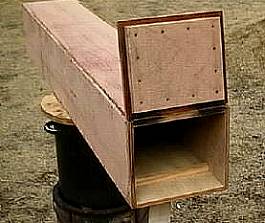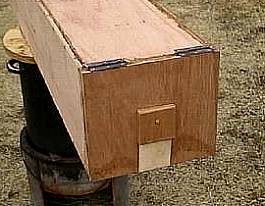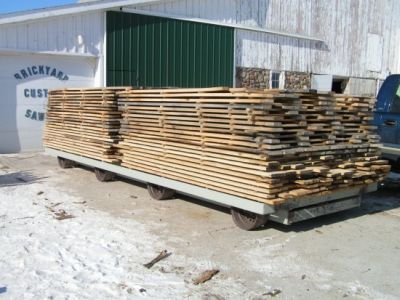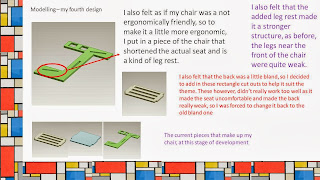What plastics are used for and why
ABS - Acrylonitrile butadiene styrene
Bb/airsoft
rifles are made out of ABS plastics because it is impact resistant and is very
strong, bb guns take a lot of beating and is thrown around when on the field,
so this material is useful for this. Most pieces of the air rifle like he internals are made from injection moulding but the outside is normally metal, or if it's all plastic it would have been vacuum formed.
CA - Cellulose acetate
Cellulose
acetate magnetic tape was introduced by IBM for use on their tape drive. It was
much lighter and easier to handle than the metal tape. It was used for many
reasons because the cellulose acetate is really tough and strong, and is
transparent so can be printed on. Magnetic tape would normally be poduced using a machine called and extruder, the process itself is called extrusion moulding.
NYLON – Polyamide
One thing that can be made out of nylon is parachutes. This material is used
because it is strong, springy, light
weight, easy to pack, not too expensive and is elastic. Another important
property of Nylon is that it resists wear. The parachutes are made from webbing the material together
PMMA – Acrylic
Rear
lights on cars can be made out of acrylic, this is because acrylic can come in
a wide variety of transparencies and colours, this make it an ideal material
for the rear lights of cars. Acrylic is also good for lights because it is resistant to inorganic
acids, extremely rigid with good Ultra Violet Resistance. The PMMA car lights are normally vacuum formed or pressed together.
PP – Polypropylene
Plastic garden chairs can be made out of polypropylene, this is because PP is
light, tough, has good resistance to chemicals and resists work fatigue, this
makes it an ideal material for this chair and garden chairs tend to be thrown
about a lot. The plastic garden chairs are most commonly injection moulded.
HIPS - High impact polystyrene
High Impact Polystyrene is a versatile, economical and
impact-resistant plastic that is easy to machine and fabricate. High Impact
Polystyrene is often specified for low strength structural applications when
impact resistance, machinability, and low cost are required. This is commonly
used to wrap up electronics and other delicate products when shipping. High impact polystyrene that is used to protect electronics is nomally pressed over a mould.
PS – Polystyrene
Polystyrene cups are made from polystyrene for many reasons, this includes the
material being light, hard, and stiff and has good water resistance, this is an
ideal material for this product as its main purpose is to hold liquid such as
water! Polystyrene cups are made by getting the material and pressing it into a shape using a machine.
LDPE - Low density polyethylene
LDPE is commonly used in bubble wrap to wrap up products when shipping; this is
because it is soft, flexible and has a good resistance to chemicals. This can
keep the product safe. Bubble wrap is made by having layers laminated together to stpo the air that has ben injected into the bubble from coming out.
HDPE - High density polyethylene
HDPE is used in bottles because it is stiff, strong, tough, resistant to
chemicals and moisture, permeability to gas, easy to processing, and easy to
form. The bottles are made by blow moulding where a pipe of heated HDPE is put into a machine and then gets pressurized air blown into it so it fits the mould.
uPVC - Polyvinyl chloride
uPVC can be used to make window frames and door frames, this is because it is
strong, waterproof and has an agent in it that makes it resistant to ultra
violet light, meaning that it will keep the colour it has originally come in. Sections of the window are made from an extruder machine and are then welded together to make the shape of the window frame.
PVC - Unplasticated flexible polyvynal
chloride
PVC is used in PVC piping, this is because it is very flexible, very strong,
waterproof, its low
cost and it being chemical resistance. PVC pipe is made using a machine called an extruder, PVC plastic is directed through a double screw stem, moulded the wall to thickness and the distance of the pipe, this is called extrusion moulding.
PET - Polyetheylene terepheluate
PET can be used in many things such as bottles, this is because it is hard,
stiff, strong and is a stable material that absorbs very little water. It has
good gas barrier properties (for carbonated drinks) and good chemical
resistance. These bottles are made from where the bottle gets blown into a mould, this is cheap and has no waste materials.
PC – Polycarbonate
Polycarbonate is a versatile, tough plastic used due to its strength and
it’s lightweight properties. It has a variety of uses electronic components,
construction material, data storage e.g. DVDs, water bottles, construction of
airplanes and cars. In addition to this, due to its strong nature and its high
refractive index, it is used to make bulletproof glass and optical lenses. The products made from this are usually made from blow moulding or vacuum forming


























